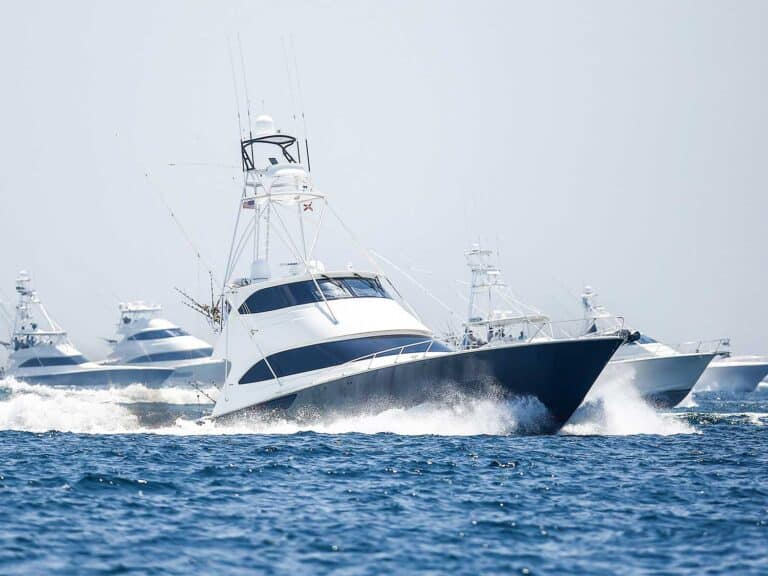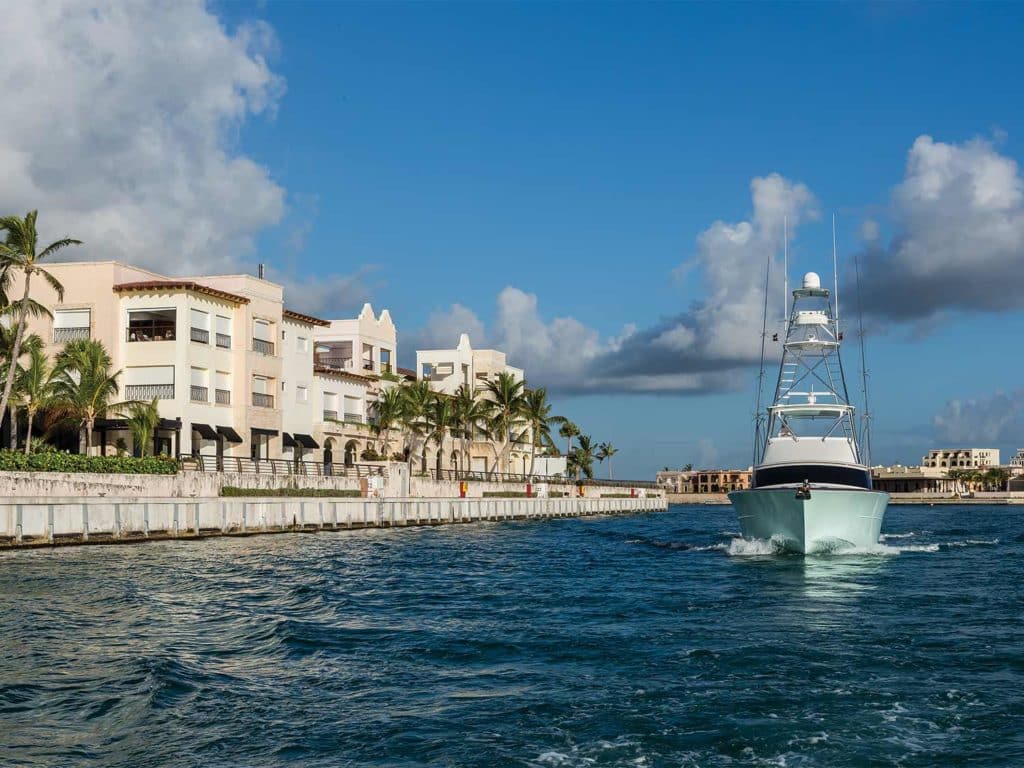
Special delivery: Sign up for the free Marlin email newsletter. Subscribe to Marlin magazine and get a year of highly collectible, keepsake editions – plus access to the digital edition and archives.
On a few, albeit all-too-rare occasions, I am absolutely convinced that you are destined to catch a certain fish before the boat has even left the dock. A case in point: the white marlin I caught recently in the Dominican Republic. The day had started off slowly, with just one fish showing the briefest interest in the left teaser, and then just as I happened to be standing next to the left long, the line snapped free from the rigger clip. I grabbed the rod, free-spooled for a few seconds, eased the drag lever forward, and smiled to myself as I felt the line come tight. Moments later, my fish was in the air.
This had been the first day of a trip planned several years previously with Capt. Angel Muntaner of Caribbean Fishing Adventures. We had been fishing for tarpon, casting flies in the tannin-stained waters of the Torrecilla Lagoon, a vast and sheltered waterway that abuts Puerto Rico’s capital of San Juan. Muntaner had mentioned that he and his father spend a lot of time each year fishing in the Dominican Republic, explaining that for several months of the year, his father relocates his 50-foot Ronin, Angela, to Marina Cap Cana. It sounded like fun.
Watch: We show you how to rig one of the best baits for blue marlin: the swimming mackerel.
Young Guns and Big Numbers
Crews fishing in the DR regularly release large numbers of both white and blue marlin, along with the occasional Atlantic sailfish, longbill spearfish, and even swordfish. Muntaner told me that on December 11, 2016, Capt. Miguel Tirado fished out of Marina Cap Cana aboard the Puerto Rico-based Blue Bird and released an astonishing 23 blue marlin, establishing a new single-day record for the Atlantic. In 2020, Marina Cap Cana was chosen by the Billfish Report as the No. 1 spot in the world for sport fishing that year, the award being based on several different criteria such as fish numbers, the variety of billfish species, average fish size, and fishing reports. Unsurprisingly, when Muntaner extended an invitation for me to come and fish with them, I accepted immediately, but then the pandemic hit. In May 2022, I finally arrived in that idyllic Caribbean paradise from my home in the United Kingdom.
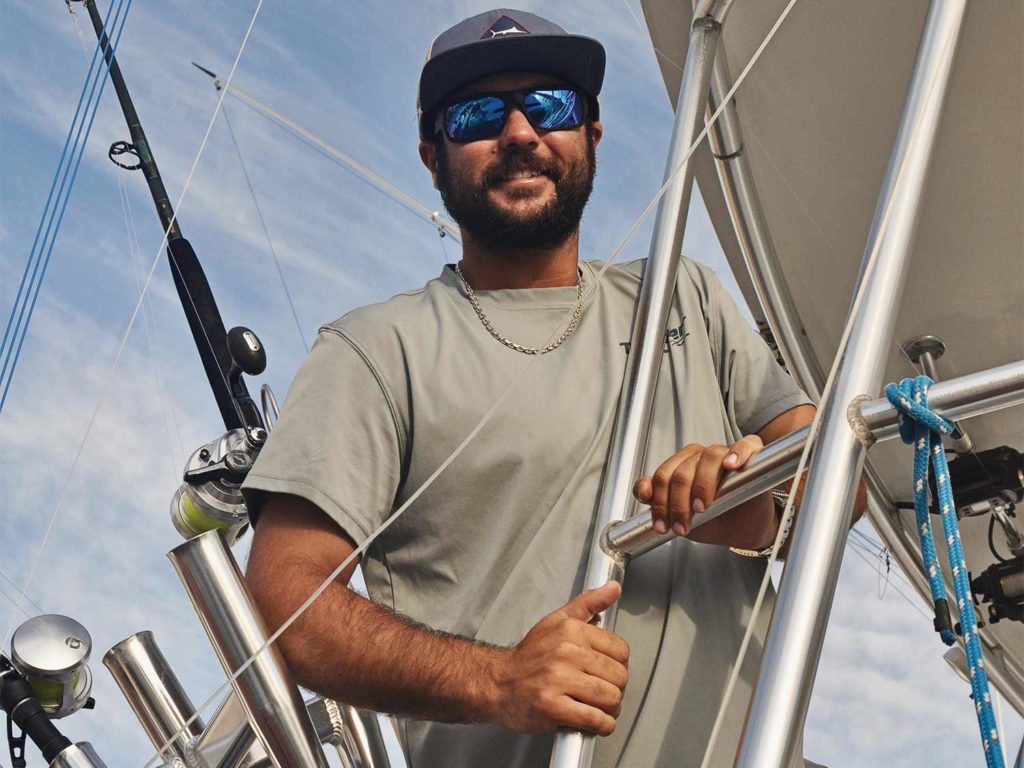
And while Muntaner is under the age of 30, don’t make the mistake of thinking that he is a rookie. He fished his first bluewater tournament at just 7 years old. It was a big event hosted at Marina Cap Cana and televised on ESPN, and he was part of a team that included his father, Angel “Tito” Muntaner, himself a renowned tournament angler. The young Muntaner caught both a white and a blue marlin, winning the gleaming Rolex he wears with pride today. “From that day onward, I was hooked on tournament fishing,” he told me as we headed out that first morning. “I fished offshore at every opportunity I could. I pleaded with my father to allow me to join him on one of his annual trips to fish in Costa Rica, and eventually he conceded, but with one proviso: Dad insisted that throughout the trip I was to hold my rod at all times, that there would be no sleeping if things went quiet. I had to remain alert, always ready for a bite. One day we were fishing on different boats, and I wasn’t sure which one my father was on. So I made sure that every time we were close to any other boat, I was always clearly visible standing in the cockpit, holding my rod,” he said.
The previous evening, Muntaner and a few of the other Puerto Rican crews we were hanging with had told me that while they do catch a few whites in the deep water off Puerto Rico, they see nothing remotely like the numbers of these pretty little billfish that they do in the DR. I asked Muntaner why these waters were so prolific for whites. His reply: “A 15-mile plateau of shallow, broken ground sits right on the Dominican Republic’s northeast shoulder like an epaulet. The depth averages just 100 to 300 feet, which would generally be regarded as being shallow for marlin, but these conditions are clearly perfect for whites, and the area holds lots of bait. Due to the close proximity and accessibility of this fishery, a lot of scientific research has taken place, and it has been confirmed that white marlin aggregate here to spawn.” Interesting.
Seasons and Times
So, when is the best time to visit? “There are almost always a few whites around, but the widely accepted season runs from March through June, with the best fishing generally occurring in April and May,” Muntaner said. “Some years the fish arrive early, other years a little later, but if you plan to fish here in those prime months, you can be confident that the white marlin will be here. And despite fishing in such shallow water close to shore, don’t be surprised if a blue pops up in your spread either.”
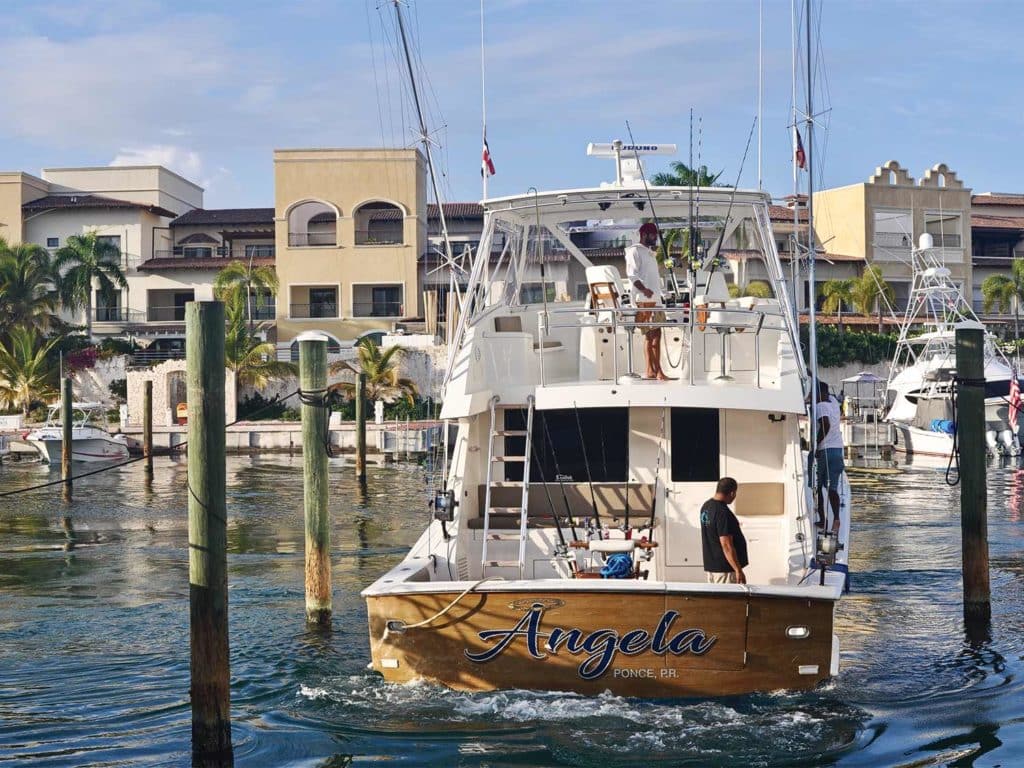
He continued, saying: “In January and February, the fishing for sailfish can be excellent. We catch these fishing the same grounds as the whites, but the local hotspot is Isla Saona, a small island located approximately 30 miles away. It’s located midway between Marina Cap Cana and Casa de Campo, and there we fish even shallower water, with depths ranging from 40 to 150 feet. At times, the water here is so shallow that we can see the bottom.”
Blue marlin are also caught year-round. The optimal time for big blues off Marina Cap Cana—fish that can average 400 pounds or so—are the peak summer months of June through August. From September until January, the numbers of blues increase, but these are mostly smaller fish in the 75- to 150-pound range, perfect for the light-tackle tournaments held during this period, and also great for anyone looking to catch a blue on fly.
I had been told that we would be fishing as close as 1 or 2 miles out, yet even so, it came as a surprise when barely 10 or 15 minutes after we had cleared the buoyed channel leading out of the marina, Muntaner eased back the throttles to his preferred trolling speed of 7 knots, and lowered the outriggers while the crew deployed the spread. Our flat-line baits were adorned with 3-inch Squidnation Slammers, which add a little extra action and color. Muntaner fishes 6/0 circle hooks on 20-pound-class tackle for whites but always has a 30-pound outfit rigged and ready with a larger bait such as a mackerel to be pitched to a blue.
Dredges are also a key component in the DR, as with nearly every other offshore fishery in the world. “When fishing a tournament for white marlin, we often incorporate mullet in the dredges, with a ballyhoo swimming immediately behind it on the flat line,” Muntaner said. “Invariably that’s the bait that gets hit first, often without any prior indication that we have raised a fish.”
Unfortunately, there is a downside to fishing for billfish in such shallow water. The 50-pound-test fluorocarbon leaders Muntaner and the other crews use for whites are frequently cut by the legions of barracuda, mackerel, and wahoo that also hunt in the shallows.
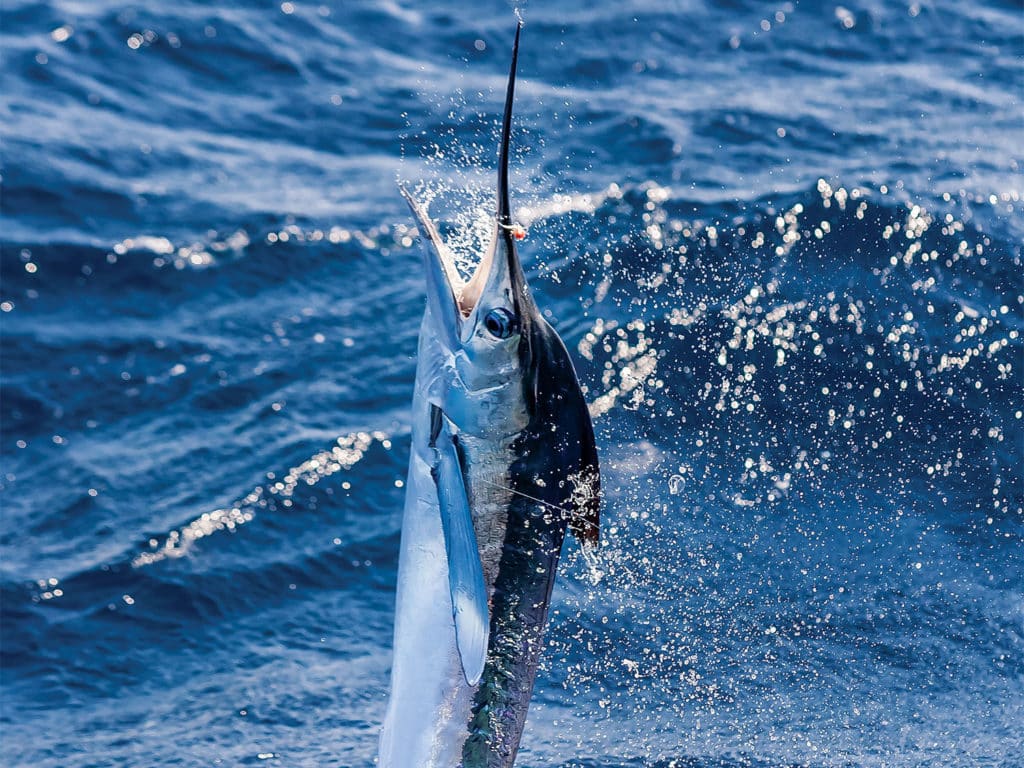
By the time we headed back to Marina Cap Cana at the end of my first day, mine had been our only billfish bite: 1-for-1 on white marlin. About half of the other boats had also released a single fish, and one had lost a blue; back at the dock, everyone agreed that compared with the previous week, the bite had been very slow. We did have a couple of chunky blackfin tuna and dorado fillets sitting on ice, ready for that night’s crew dinner.
The fishing on Day Two was also a struggle for all of the boats who fished. For most of the day, the sky was a socked-in mass of gray-black clouds that delivered frequent heavy showers. The crew confirmed that the best conditions for whites in shallow water almost always coincided with bright and sunny conditions, and sure enough, we didn’t raise a single billfish. The only action we did get came courtesy of a couple of small tuna and various members of the razor gang, for whom such conditions are much more favorable.
The FADs
On Day Three, Muntaner was determined to find fish. We headed offshore to fish the many fish-aggregating devices that start about 27 miles from Marina Cap Cana, and just 7 miles off the country’s northern coast. There are more than 100 of these devices located in the deep, inky-blue water outside the drop-off. Much of the Dominican Republic’s economy is based around tourism, and the thousands of visitors who stay at the numerous resorts means there’s a steady market for fresh fish. The FADs are put into place by local panga fishermen with the approval of and, I was told, some assistance from the government. On the south coast, sport-fishing boats contribute an annual levy to help with the installation and maintenance of even more FADs. The multitude of dorado, tunas, and other prime eating fishes that they produce is greatly appreciated by tourists, along with both the commercial- and sport-fishing communities. The FADs are marlin magnets—especially for blues. Sadly, this was not the case on the day we fished. Each FAD we visited hosted a healthy population of dorado, but we failed to raise a single billfish.
For my fourth and final day fishing out of Marina Cap Cana, I was privileged to be given the opportunity to join Capt. Pete Manuel, along with his wife, Laurie, and her daughter, Jessie, aboard Delta Dawn, their 57-foot Island Boat Works. Manuel has fished a long and hugely successful career as a charter and tournament captain. Originally from Morehead City, North Carolina, Manuel and his family relocated to Casa de Campo on the south coast of the Dominican Republic a few years back; I asked him why.
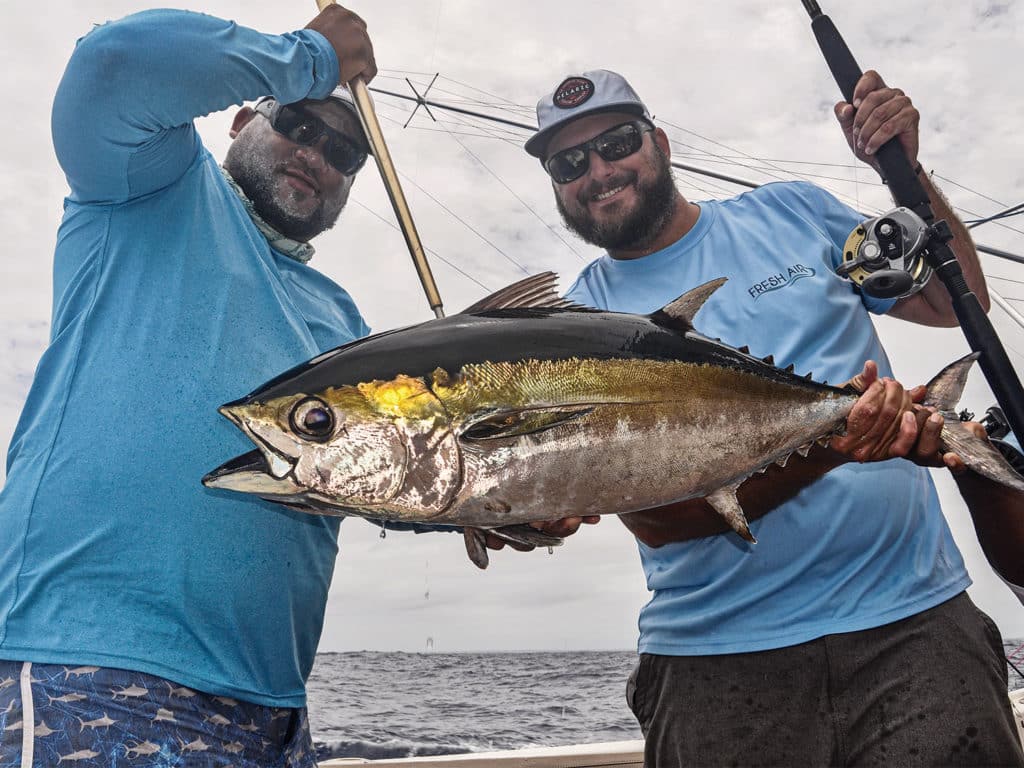
“For many years, we used to fish the winter months in Venezuela, but today, that just isn’t possible,” he said. “The fishing here in the DR is similar, with large numbers of whites, blues and sails. You could say that for us and many others, the DR has filled the void left by the closure of the Venezuelan fishery.”
Casa de Campo is only about 60 miles from Marina Cap Cana, but the fishing there is very different. I asked Manuel to run me through the season on the south coast. “The biggest difference is that unlike the shallow inshore grounds off the northeast coast, the drop-off is much closer to Casa de Campo, meaning you are invariably fishing much deeper water,” he said. “The blue marlin arrive much earlier off Casa de Campo; February through April is the optimal time. Exactly when is entirely dependent on the currents that control the water temperature, along with the availability of bait. Sailfish are prolific during January and February. We do see an occasional white marlin off the south coast, but nothing like the numbers we encounter here [in Cap Cana].”
Manuel and his crew were coaching Jessie, who at just 12 years old was preparing for an upcoming tournament. Just as Muntaner’s father had insisted from the start of his angling career that he learn to fish properly, so it was with Jessie. When it was her turn to monitor the flat lines, she patiently stayed close to her rod. Everyone wore headsets to remain in constant communication with Manuel, who relayed a calm, concise commentary of exactly what he was seeing and thinking throughout the day. I could see that Jessie was thoroughly enjoying the experience; she was eagerly absorbing all she was being taught. Once again, though, the previous week’s hot bite had all but shut down. Later we heard that few fish had been raised, with just one or two releases for the fleet.
Crew Days
At the end of a day’s fishing, my normal routine is to head back to wherever I’m staying, sink a few cold beers and possibly a cocktail or two, followed by dinner. During my trip to Marina Cap Cana, I had the opportunity to stay with the crew in the spacious apartment Muntaner’s father rents just a few yards from the dock. Each day, with our fishing done, I still got to enjoy my early-evening iced beers, followed by a couple of Don Q Cristal rum and Cokes dockside as I watched the crew preparing our baits for the following day. On our one nonfishing day, they showed me how they rig their dredges and teasers; as a result, I learned more about the intricacies of rigging perfectly swimming baits than I have in many years of fishing.
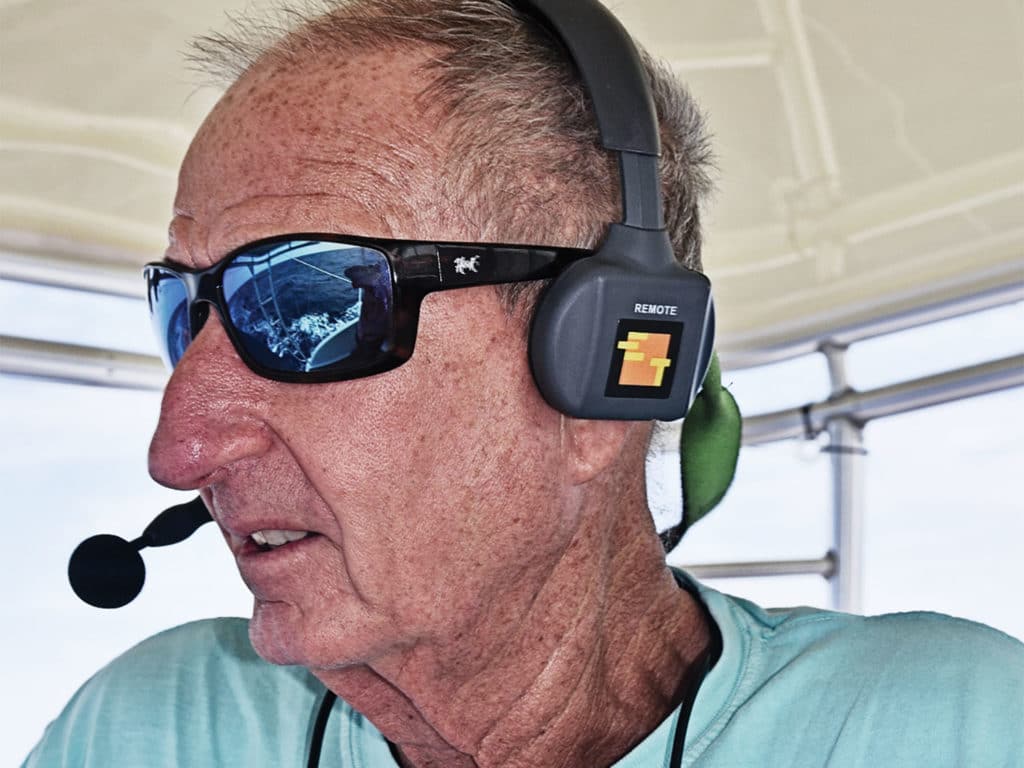
Each evening, our apartment became a hub of activity for many of the Puerto Rican crews, some of whom proved to be truly talented chefs. It’s fair to say that the food I experienced was one of the trip’s highlights, even at one of the world’s finest fishing lodges. Each evening following dinner, we played dominoes, which I was quick to learn is a game that requires far more skill than I ever realized. Dominoes is a big part of Puerto Rican community social life, and these guys were pros. We had a lot of fun, and I made some great new friends with whom I will certainly fish again.
But back to the opening lines about sometimes a special fish really does have an angler’s name on it. That one white marlin I caught was the only billfish I saw during my trip, and while its capture certainly didn’t attract any attention at Marina Cap Cana, it was the fish that I had traveled to the Dominican Republic to catch. It was my ninth species of billfish in my career, and the one I needed to finally complete my IGFA Royal Billfish Slam. You couldn’t sandpaper the smile off my face for the remainder of the trip.
Read Next: We celebrate four decades of Marlin.
The Lay of the Land
The Spanish-speaking Dominican Republic is located on the eastern side of the island of Hispaniola. A part of the Greater Antilles, this is the second-largest island in the West Indies; only Cuba is larger. The French- and Creole-speaking Republic of Haiti is located at the western end of this nearly 400-mile-long island.
The international airport at Punta Cana is conveniently located about 20 minutes away. Capt. Angel Muntaner can be contacted for charters in the Dominican Republic as well as Puerto Rico through his company, Caribbean Fishing Adventures.
Much of the economy of the Dominican Republic relies on tourism, and visitor safety is taken very seriously. From what I was told and experienced during my trip, provided you stick to recognized tourist areas, you are unlikely to experience any problems. I was advised to take extra care and remain vigilant after dark in some of the quieter areas of Punta Cana, and especially if I were to visit the capital of Santo Domingo, but this is pretty much standard advice anywhere in the world. For the latest information and advisories on travel to the Dominican Republic, visit the US State Department’s website.





